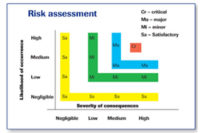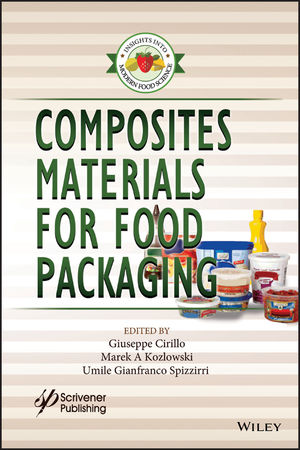TECH FLASH
Are carbon nanotubes/nanoparticles safe?

A recent research project from India entitled, Presence of Amorphous Carbon Nanoparticles in Food Caramels, suggests carbon nanoparticles (CNPs) have been in certain foods ever since man knew how to use fire and bake breads or cook with sugars. The study, therefore, assumes that since we have been eating certain foods (e.g., breads, jaggery and sugar caramels) for eons, then eating food containing nanoparticles must be safe.

|
| Triple-walled armchair carbon nanotube rendered in POVRay. Source: Eric Wieser. |
“The CNPs were amorphous in nature; the particles were spherical having sizes in the range of 4–30 nm, depending upon the source of extraction. The results also indicated that particles formed at higher temperature were smaller than those formed at lower temperature,” according to the study. The study suggests CNPs may be very useful for numerous biological applications, as their sources are regular food items.
The study, which is available on Scientific Reports(www.nature.com), points out the use of CNPs in food and in food-contact (items) is still being hotly debated as the long-term effects are not yet completely clear. The research report also says carbon nanotubes (CNTs) were probably the basis for sharp cutting edges used in early civilizations. But, CNTs are only mentioned one time in the report.

|
| A field emission scanning electron micrograph of a multi-walled carbon nanotube (MWCNT) penetrating the pleura of the lung. Image courtesy of Robert Mercer, and Diane Schwegler-Berry, NIOSH. |
While CNPs appear in nature and seem to be safe, CNTs are engineered for specific applications today and haven’t been around long enough to have an ample body of research indicating whether they may affect human health. One report in 2008 suggested the inhalation of CNTs might be as dangerous as inhaling asbestos particles, which can cause mesothelioma, a deadly form of cancer. A study conducted by the Center for Biological Evaluation and Research (CBER), which appears on the FDA website, suggests “CNTs in the blood can cause thrombosis formation by activating platelets.”
Yet another study suggests the ingestion of polystyrene nanoparticles, “an FDA-approved material found in substances from food additives to vitamins,” may affect the absorption of iron. Tests done in vitro with chicken cells found that with an exposure to the nanoparticles, iron absorption decreased within a few minutes to a few hours.
While several studies have been completed, the amount of sound, actionable information is still sketchy, and much more work needs to be done. “The chemical and physical properties of materials at the nano scale can differ significantly from those at the macroscopic scale,” writes James A. Kosch veteran environmental attorney for LeClairRyan. “Today the ultimate effects of ‘the smallest of the small’ on human health and/or the environment are simply not well studied or known.” Kosch is a Newark-based shareholder in the national law firm’s Tort Defense Practice and a director of the New Jersey State Bar Association’s environmental law section.
Where is FDA on these matters? Some consumer groups think FDA’s been out to lunch since 2006, when an FDA Task Force Report was issued. In April of this year, FDA released guidance on accessing the effects of significant manufacturing process changes, which includes the use of CNTs. (Federal Register version with comment instructions can be found here.) Careful reading shows FDA is in tune with nanotechnology and ready to assume an active role in nanoparticle research and regulations.
FDA defines the scope of this guidance as follows:
“Any manufacturing change has the potential to be significant, and this remains true for changes or novel products, involving nanotechnology. Alterations in particle size distribution on the nanometer scale, which alter the physical and/or chemical properties of food ingredients and FCSs (food contact substances), can sometimes be significant manufacturing changes. The discussion in this document of nanotechnology—in particular, intentional alterations of particle size distribution on the nanometer scale—primarily addresses circumstances in which there has been a manufacturing change to a food substance already used in food.”
According to FDA, the application of nanotechnology may result in product attributes that differ from those of conventionally manufactured products and, thus, may merit examination. However, FDA does not categorically judge all products containing nanomaterials or otherwise involving application of nanotechnology as intrinsically benign or harmful. Rather, for nanotechnology-derived and conventionally manufactured food products alike, FDA considers the characteristics of the finished product and the safety of its intended use.
For several consumer watchdog agencies, FDA hasn’t gone far enough. “From 2006, when we filed our legal petition, to 2012, FDA has improved some,” says George Kimbrell, Center for Food Safety attorney. “As these new responses show, the agency is no longer ignoring the scientific consensus that these nanomaterials have the capacity to be fundamentally different, and can create new and novel risks, necessitating new testing. Unfortunately, the agency has thus far only taken a voluntary rather than mandatory regulatory approach, despite the failure of voluntary approaches to elicit industry cooperation to regulate nanomaterials.”
Most of the issues the consumer groups have with nanomaterials in foods, FCSs, sunscreens and cosmetics revolve around the following points:
►Products already are on the market that contain CNPs.
►Many are not labeled as containing nanoparticles.
►These products are largely untested for their human health effects.
A potential area of concern is the use of nanomaterials in food and FCSs, such as food packaging materials and conveyor belts, according to Steve Suppan, senior policy analyst for the Institute for Agriculture and Trade Policy (IATP). The good news is that FDA in its most recent guidance proposed classifying these substances as food additives, which require premarket testing and approval. The guidance advised that FDA likely wouldn’t accept industry claims that nano-scale food substances could be assumed to be safe because their macro-scale counterparts were assumed to be safe.
“This decision is a big win for consumers and will mean that nano-food additives will for the first time require pre-market safety review and approval,” says Suppan. “It is crucial that consumer organizations comment on the draft guidance to support this FDA decision, and urge that it be a basis for mandatory regulation.”
Kosch welcomes the FDA response. “The FDA suggests that companies manufacturing and selling [nanoparticle-based] products should meet and confer with the agency to start sharing information and develop this research,” writes Kosch. “Such collaboration is hardly the norm in the regulatory sphere. This approach is a sound one by a regulatory agency, and responsible companies should heed the invitation.”
Looking for a reprint of this article?
From high-res PDFs to custom plaques, order your copy today!







